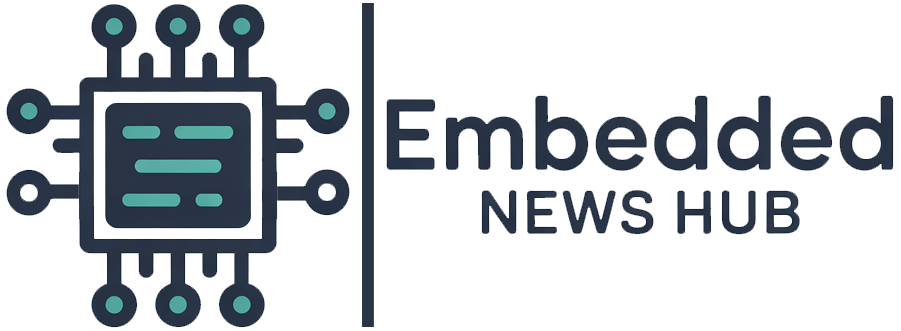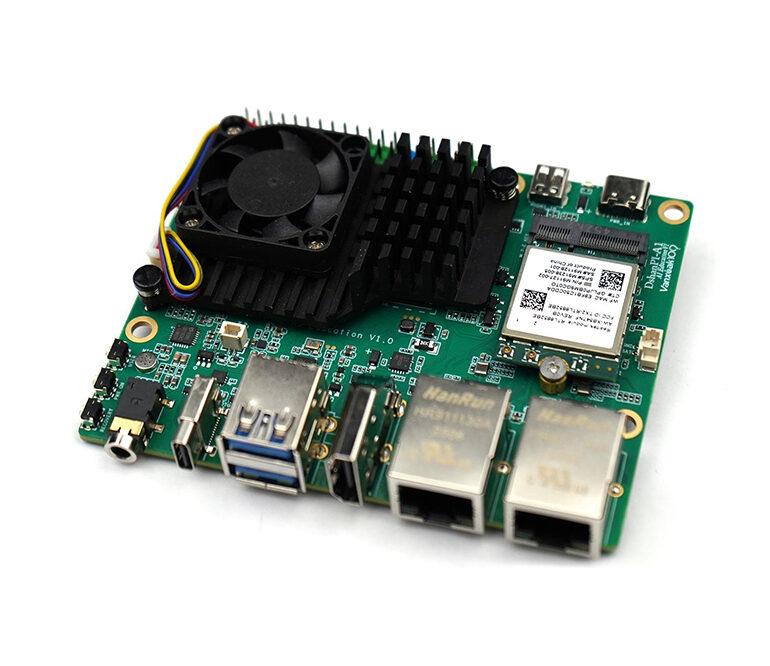DongshanPi has introduced the DshanPi-A1, a single-board computer (SBC) built around the Rockchip RK3576. The board targets AI and computer vision education by combining high-performance processing with a developer-focused software environment.
The DshanPi-A1 provides strong computing power, diverse I/O connectivity, and a structured software stack that supports projects ranging from vision-based learning to advanced edge computing applications.
 DongshanPi DshanPi-A1 powered by Rockchip RK3576 SBC
DongshanPi DshanPi-A1 powered by Rockchip RK3576 SBC
DongshanPi DshanPi-A1 SBC Specifications:
Processor and GPU:
- Rockchip RK3576 SoC
- 4x Cortex-A72 cores
- 4x Cortex-A53 cores
- 1x Cortex-M0 auxiliary core
- Mali-G52 MC3 GPU
- Neural Processing Unit (NPU): ~6 TOPS (INT8 & mixed precision)
- 16 MP ISP with HDR and 3D noise reduction
Memory and storage:
- Supports LPDDR4/LPDDR5 RAM (capacity not finalized)
- eMMC storage support
- TF/microSD card slot
Video:
- Video decoding: AV1, H.265, VP9 (up to 4K @120fps)
- HDMI output
- HDMI-IN for video capture
- DisplayPort via USB-C OTG port
- MIPI DSI display interface
- MIPI CSI camera interface
Audio:
- Rockchip RK628D codec
- ESS8388 DAC
- Audio output for speakers and headphones
Networking:
- Dual Gigabit Ethernet ports via RGMII PHYs
- M.2 E-key slot for PCIe Wi-Fi 6 modules
I/O Interfaces:
- PCIe for expansion
- USB 3.0 ports (multiple)
- USB-C OTG port (supports DisplayPort output and firmware flashing)
- SATA interface
- GPIO expansion with SPI, I2C, PWM, ADC
Debug: UART header for debugging (TX, RX, GND pins for USB-to-TTL adapter)
Power: Powered via USB-C with Power Delivery (30W adapter recommended)
Dimension: 97 mm x 77 mm
The DshanPi-A1 runs a developer-friendly software stack built around ArmbianOS for RK3576 hardware. Armbian includes pre-integrated support for OpenCV along with Rockchip’s inference and media libraries, giving developers a ready environment for AI and multimedia projects. The board also provides system images, flashing tools, schematics, and 3D-printable case files to streamline development and deployment workflows. Community builds remain “community-maintained,” so they work reliably but may not always match Armbian’s official QA standards.
The platform supports a wide range of AI applications, from entry-level to advanced. Developers can run face detection, object recognition, license-plate scanning, instance segmentation, and even generative AI models. It also offers support for ROS2, QT5, RKNN model setup, audio AI models, and visual AI models such as DeepSeek-R1 and Qwen-VL. More details available on the wiki page (currently in Chinese).
Armbian Config window
The DshanPi-A1 has not officially launched yet, but early documentation is already available on the DshanPi Wiki and through the Armbian community.
Thanks to LinuxGizmos for the information. Images courtesy of zhuanlan.zhihu and csdn.





